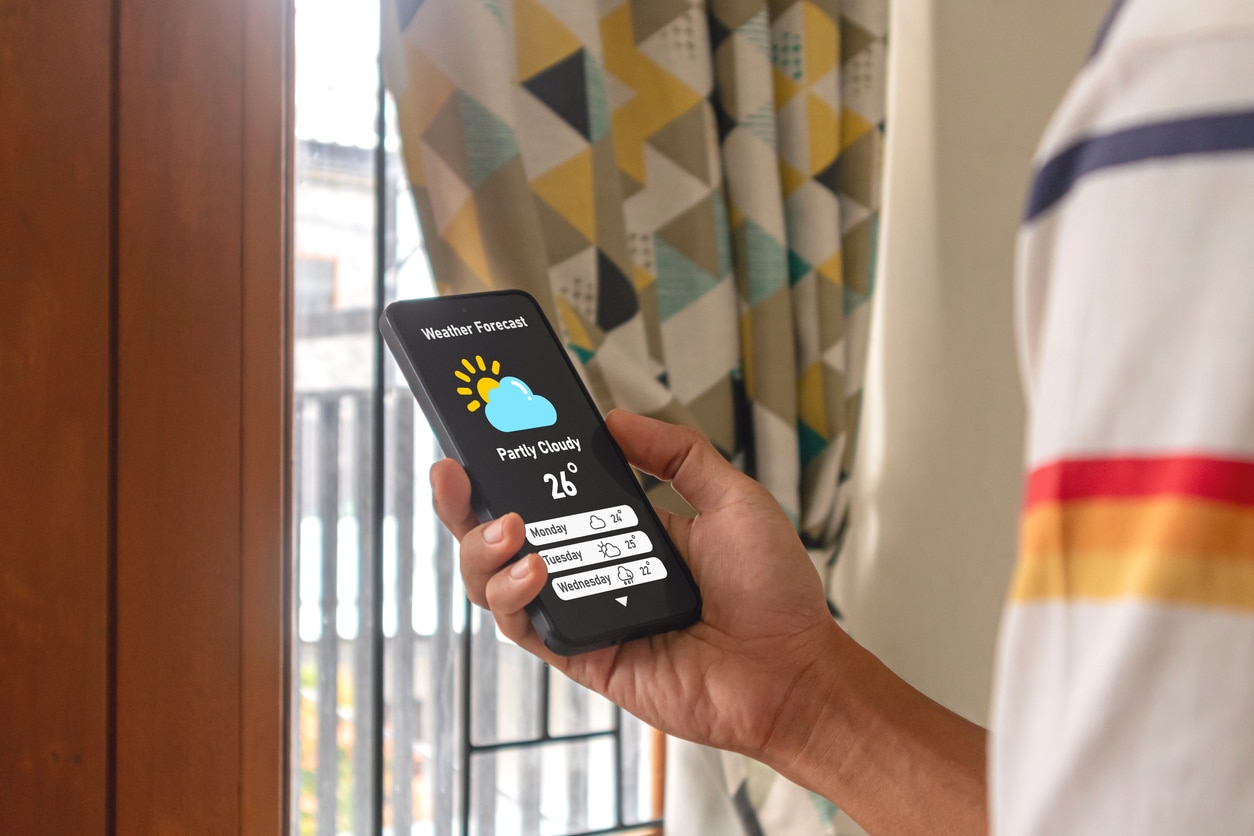Nearly 60 percent of all moves in the U.S. take place between May and August, but while this peak season is undeniably convenient (when you have school-age kids, in particular), it’s also the most expensive time to relocate. So if you want to curb costs and escape the hassle of hauling boxes in the summer heat, moving in the winter is a smart idea.
Not only will it be easier to rent a truck or hire an affordable moving service at this time of year, but you also won’t have to deal with the sun beating down while you’re drenched in sweat. Who wants that, right? Of course, moving in the winter presents its own obstacles, like braving cold temperatures or inclement weather. Fortunately, this guide covers all the tips for moving in winter you’ll need for a safe, efficient transition.
17 Tips for Moving in the Winter
Is it cheaper to move in the winter? The answer is a resounding, “Yes.” But financial perks aside, there are many factors to consider when relocating this time of year. From packing your home and monitoring weather conditions, to planning for harsh temperatures and taking safety precautions, let’s take a look at the best tips for moving during winter.
Moving in winter: Before moving day

1) Pack your boxes with cold temperatures in mind
Winter moving requires you to pack much differently than moving in warmer months. Certain items might be sensitive to cold temperatures, so insulate your boxes to prevent cracks, water damage, or other climate-related issues in transit. Line each box with materials like foam, towels, and bubble wrap to provide a buffer against the elements. Pack fragile items with an extra layer of protection just to be on the safe side.
2) Stock up on winter essentials to keep everyone warm
Whether you hire professional movers or rent a truck and recruit some friends to help you load it, make sure everyone has the essentials they need to brave the weather. Stock up on extra hand warmers, scarves, earmuffs, beanies, and gloves in case anyone doesn’t bring their own winter gear. And remember, staying hydrated is just as important in the winter, so have plenty of water and electrolytes on hand.
3) Assemble an emergency kit to store inside your car
If you plan on moving long-distance this time of year, the road conditions can be dangerous, especially when moving in the snow. You can’t always predict if an emergency will occur, but you can prioritize the right safety measures in advance. Before hitting the road, assemble an emergency kit with the following items to store in your car or rental truck:
First aid supplies
Snow shovel
Hard-copy maps
Wireless portable charger
Thermal blankets
Flashlight
Bottled water
Non-perishable snacks
Spare tire
Jumper cables
Snow chains
Gas canister
Extra windshield wiper fluid
Emergency contact list
4) Inspect and service your car for winter conditions
If you’ll be driving your vehicle as part of the relocation, have a trusted mechanic inspect your vehicle a few weeks before the move, then schedule necessary repairs to winterize the car. Top off the coolant and other fluids, ensure the brakes are in optimal condition, and check the pressure and tread on all four tires. If your car is due for an oil change, take care of that ahead of time as well.
5) Schedule utilities at your new home well in advance
When you’re moving in the winter, just think how inconvenient (not to mention downright unsafe and uncomfortable) it would be to show up at your new home without any functioning heat. To avoid this potential setback, contact all utility providers well ahead of your moving date to confirm the heat, electricity, and water will be on when you move in.

6) Track the weather forecast leading up to the move
Keep an eye on the weather in advance, especially in the week leading up to your move. Communicate with your movers and real estate agent or landlord to formulate a plan B (or even reschedule altogether) if the weather is too harsh. Knowing the forecast ahead of time will also make it easier to determine the best possible travel route.
7) Plan ahead for the warmth and safety of kids and pets
If you have small children or pets, make sure they’re safe, warm, and occupied on moving day. The night before, set aside a comfortable room for them and stock it with food, toys, blankets, and other items to keep them entertained. Moving can be a stressful experience for young kids or pets, so creating a space where they feel calm and secure will help soothe any jitters (and ensure they don’t get in the path of your movers).
Moving in winter: On moving day
8) Dress in comfortable layers to shed as necessary
Wear a few layers of clothing that can easily be removed if you start to work up a sweat from moving heavy furniture or handling other last-minute tasks. It’s also smart to wear non-slip shoes to minimize the risk of losing your balance on icy surfaces.
9) Coordinate with movers on where they should park
If you’ve hired professional movers, contact them an hour or two before their arrival time to coordinate the parking situation. This will ensure the moving truck doesn’t obstruct any snow plow routes in your neighborhood while the movers are loading.
10) Clear the driveway and make a safe path for movers
Clear the driveway of all snow or frost and create a path to your house before the truck arrives. You’ll also want to sand or salt the area to keep it free of ice and prevent falls or injuries. Use flattened-out cardboard (secured with duct tape) to create a safe, unobstructed walking path inside the house as well. Don’t use plastic sheets or tarps, as this material could be too slick if the movers’ shoes are wet from snow and ice.
11) Allow plenty of time for the move and potential delays
The days are shorter and the weather is more unpredictable this time of year, so take these factors into account if you’re moving in the winter. Schedule the movers to show up as early in the morning as possible, so they will have enough time to finish the job while it’s still daylight.
This also builds in some extra breathing room for potential delays. The process could take longer than usual in harsh seasonal conditions, and you don’t want the movers to feel rushed. That’s when injuries or damage to your items are more likely to occur.
12) Create a “warm room” for the movers to use on breaks
Designate a room where the movers can thaw out and warm up after being outside in the elements. Set up this “warm room” with a space heater, a few blankets, hot beverages, and hearty snacks. Here are some options to have on deck for movers:
Coffee
Tea bags
Hot cocoa
Granola bars
Trail mix
Crackers
Hummus
Cheese
Beef jerky
Pizza
Sandwiches
Water
Sports drinks with electrolytes
13) Turn down the heat inside while loading up the truck
Turn down the heat in your home while you’re loading the truck, since the doors will likely be open for long stretches. This will cut down on unnecessarily expensive heating bills. If it starts to feel too cold inside, you can always turn on a space heater and throw on an extra outer layer — or take shelter in your “warm room.”
14) Pack any electronics and houseplants in your car last
Instead of placing electronics and houseplants in the truck, transport them in your car, where it will be much warmer and more climate-controlled. Pack delicate items in bubble wrap or other insulating materials, then load them into the car just a few minutes before leaving, so they won’t be exposed to the winter temperatures for too long.
Moving in winter: After moving day
15) Create a safe path for movers to unload the truck
If you’re driving to your new home separately, chances are, you’ll beat the movers. To streamline the unloading process, clear the driveway, salt or sand the area, and create a safe path to the house before the truck arrives (just like at your old house). Inside, you’ll also want to tape down flattened cardboard to protect your floors and minimize slips.
16) Unpack wet boxes right away to minimize damage
Once the moving truck reaches its final destination, unpack any wet boxes, then dispose of them immediately. This will prevent water damage to the contents inside. Have towels on hand to dry off wet items. After unpacking, you can recycle the boxes that are still completely intact or keep them to use for storage in your new home.
17) Turn off the heat inside while unloading your items
As with loading up the truck, you’ll want to shut off the heat while unloading the truck as well to avoid receiving a steep utility bill after just settling into your new home. If the conditions are extremely cold, that’s what a space heater is for.
Heat Up Your Winter Moving Journey with Colonial Van Lines
Moving during winter is an affordable option, but it can also be hard work, with many unique considerations and specifications to account for. If you plan on moving in the winter, but aren’t sure where to start, Colonial Van Lines is here to help.
With over 50 years of experience in long-distance relocation, our highly trained movers know the complexities and challenges this time of year can present. From techniques to insulate your valuables to methods for protecting your floors, we have the tools and expertise to facilitate a smooth transition, no matter the season. Contact us for a free quote today!

